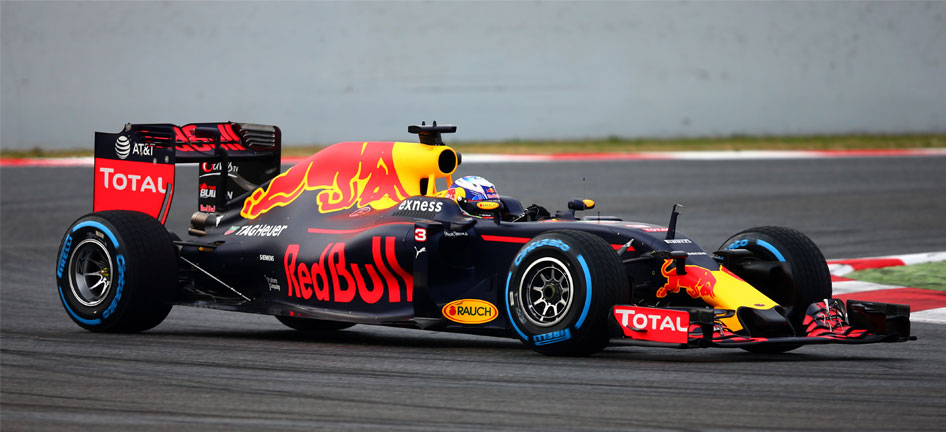Formula One: Data-driven Performance

The 2016 Formula One season is now underway. Red Bull Racing team is extracting the best performance from its cars, mechanics, engineers and drivers over nine months of grueling racing. We sat down with Al Peasland on the sidelines of the AT&T Technology Leaders Forum in Singapore. Al gave us a glimpse behind the scenes of motorsport’s most technologically advanced discipline.
AT&T: What does it take to get ready for the Formula One season?
Peasland: It takes a huge amount of preparation – and data – to get on the grid for the season opener. We processed a vast volume of information to design, manufacture, build and test our 2016 car, the RB12. And we did it in just 5 months. But the machine that debuted in Melbourne was not the same car that we fielded in Bahrain – or that you’ll see in Shanghai in a few days. The RB12 is an evolving prototype. It will be refined throughout the season and fine-tuned for every race.
The RB12 contains around 100 sensors that monitor the performance of all the critical elements of the car – from tire temperatures and pressures to fuel consumption to the G-forces and loads on the car’s suspension. The car captures and shares this data with the team, who then analyze it in real time both at the race track and the UK Headquarters. That’s how we give our drivers the best car for the track and the conditions on the day. The quality of our communications network can make or break our season.
Since 2011, we’ve worked with AT&T as an Innovation Partner. We gain access to a global data network and advanced services, like highly secure high-speed, high-bandwidth connectivity. It is vital to us that we can rely on AT&T technology in our pre-season preparation and every day after.
AT&T: So you need advanced communications pre-season. Is it during the season that the network really has to prove itself?
Peasland: Yes, that’s true. Data transfer is vital to our success. Our AT&T network lets the team quickly share data among our 60 trackside engineers, their 30 counterparts at our UK headquarters and the Team at our power unit manufacturer.
We can transfer up to 400 GB of data every race weekend. High speed and low latency is crucial. We rely on the offsite teams to help us analyze data, running sophisticated simulation tools at our headquarters’ datacenters and using high-definition videoconferencing for face-to-face meetings.
This year, with two races added to the calendar, the challenge is even greater. Over the course of 9 months, we’ll set up at 21 race circuits in 21 countries on five continents—and multiple Formula One test locations. The AT&T team has to thoroughly test the network at every site and preempt any problems. When Red Bull Racing gets to the track, we simply set up our mobile offices, telemetry areas and garage, and get working.
The three days before each race are frantic. We test and monitor the cars and rebuild them as necessary. The faster we can capture data and share it with the relevant team experts, the sooner we know what’s happening, and how to improve.
AT&T: This data is obviously highly sensitive. With so much high-value information being shared around the world, how do you keep it safe?
Peasland: We connect our trackside team at all facilities via a highly secure Virtual Private Network (VPN). AT&T is constantly boosting security on this VPN. This gives us the confidence to share more sensitive data –useful data containing intellectual property that adds to our competitive advantage. This freedom means that our UK-based engineers are able to offer deeper insight to the race team.
Team members also use smartphones as part of a Unified Communications solution protected via AT&T mobile device management tools.
AT&T: How big a part does big data now play in Formula One?
Peasland: Data-driven collaboration is the name of the game in Formula One today. AT&T networking and unified communications tools create the right infrastructure and ecosystem for us. We rely on AT&T for the network support and innovative telecommunications solutions we need.